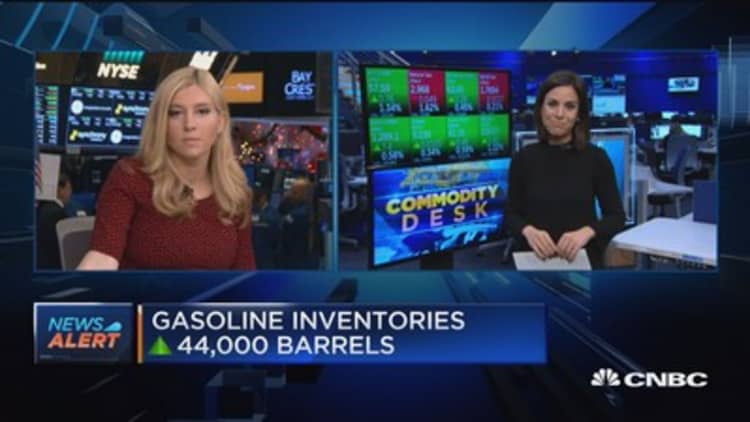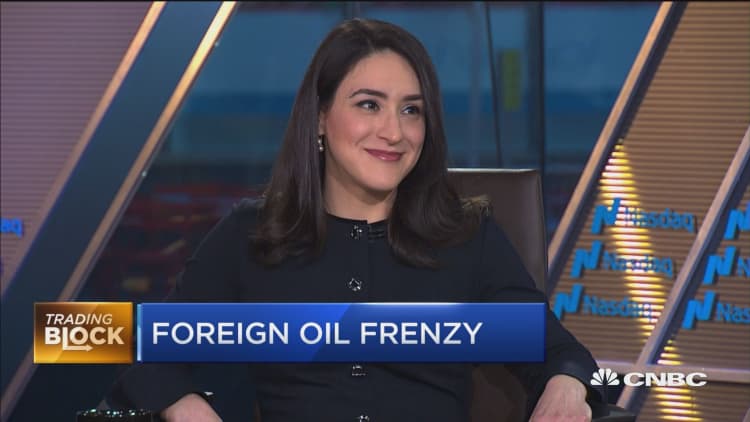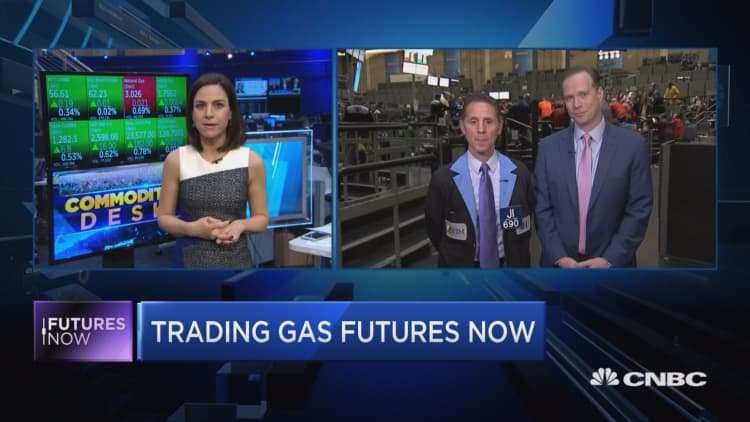
Oil prices rose on Wednesday, with U.S. light crude hitting highs not seen since June 2015 after disruptions to a major pipeline dented Canadian deliveries to the United States, where crude inventories were also reported to be falling.
U.S. commercial crude inventories fell by 1.9 million barrels in the week through Nov. 17, a report from the U.S. Energy Information Administration showed. Analysts expected a decrease of 1.5 million barrels.
Gasoline stocks were unchanged, compared with analysts' expectations in a Reuters poll for a 737,000-barrel gain. Distillate stockpiles, which include diesel and heating oil, rose by 269,000 barrels, versus expectations for a 1.2 million-barrel drop, the EIA data showed.
U.S. West Texas Intermediate (WTI) crude futures finished Wednesday's session up $1.19, or 2.1 percent, to $58.02 a barrel, the highest closing level since June 30, 2015. The contract touched a session high of $58.09, an intraday high going back to July 1, 2015.
Brent crude futures, the international benchmark for oil prices, were up 73 cents, or 1.2 percent, at $63.30 per barrel by 2:30 p.m. ET (1830 GMT),

Traders attributed an earlier spike to an 85 percent cut in the amount of oil TransCanada Corp will deliver to the United States on its Keystone pipeline through the end of November, announced by the company on Tuesday.
Keystone, which carries 590,000 barrels per day of crude from Alberta's oil sands to markets in the United States, was shut last week after a 5,000-barrel spill in South Dakota.
"There is a shortage of crude oil into the United States. Hence the rally in the prices," PVM Oil Associates strategist Tamas Varga said.
U.S. energy companies this week added oil rigs, with the monthly rig count rising for the first time since July as crude prices traded near their highest levels since the summer of 2015.
Drillers added nine oil rigs in the week to Nov. 22, bringing the total count up to 747, General Electric Co's Baker Hughes energy services firm said in its closely followed report on Wednesday. Baker Hughes released the rig count early this week due to the U.S. Thanksgiving Day holiday on Thursday.
Outside North America, markets have been supported by an effort led by the Organization of the Petroleum Exporting Countries (OPEC) to restrain output to end a global supply overhang.
The deal to curb production is due to expire in March, but OPEC will meet on Nov. 30 in Vienna to discuss the outlook for the policy.

"There is growing consensus that OPEC will extend their production cut deal at the end of the month. This confidence along with the current geopolitical environment has kept ICE Brent trading firmly above $60 per barrel," Dutch bank ING said on Wednesday.
"However, an outcome at the OPEC meeting which falls short of market expectations, will likely lead to a selloff, and given the large speculative long in Brent, this could be fairly severe," it added.
J.P. Morgan said in its 2018 commodities outlook, released late on Tuesday, that "oil markets in 2018 will be balanced on the back of extended ... production cuts," but added that without extended cuts markets would be in surplus.
"We expect Brent to trade at the top of the $40 to $60 per barrel range, with Brent averaging $58 per barrel in 2018," the U.S. bank said. "WTI is expected to average $54.6 per barrel.
— CNBC's Tom DiChristopher contributed to this report.

